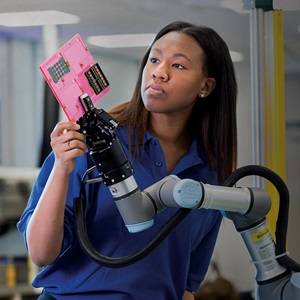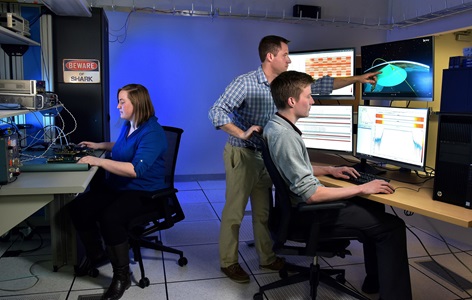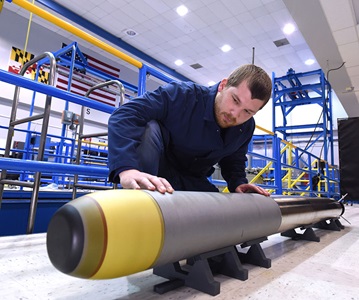Keeping Astronauts Safe with NASA’s Orion Spacecraft’s Launch Abort System
Protecting astronauts – from launch through initial ascent.

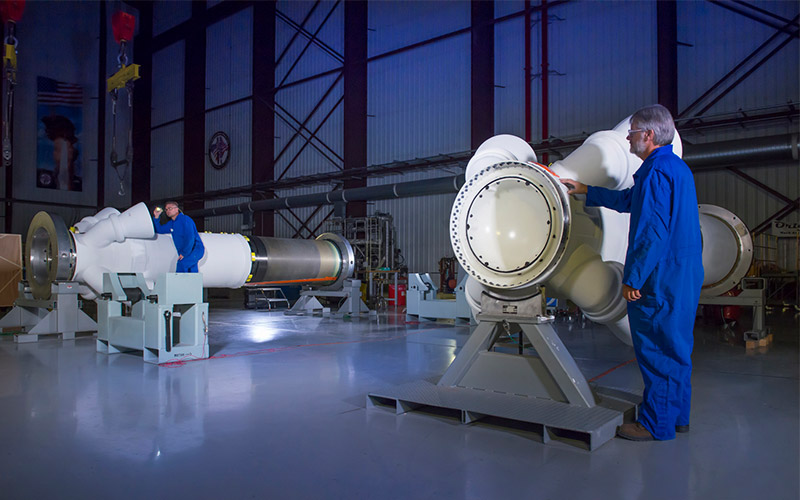
By Kelly McSweeney
The Launch Abort System (LAS) for NASA’s next human spacecraft, Orion, is designed to protect astronauts if a problem arises during launch or initial ascent. It's like an emergency exit for Orion, the capsule that will transport people to the moon by 2024.
"We're making motors that we expect will never be used, however, their ability to perform is unmatched" said Breanne Sutton, lead engineering analyst for Northrop Grumman's Attitude Control Motor (ACM) program.
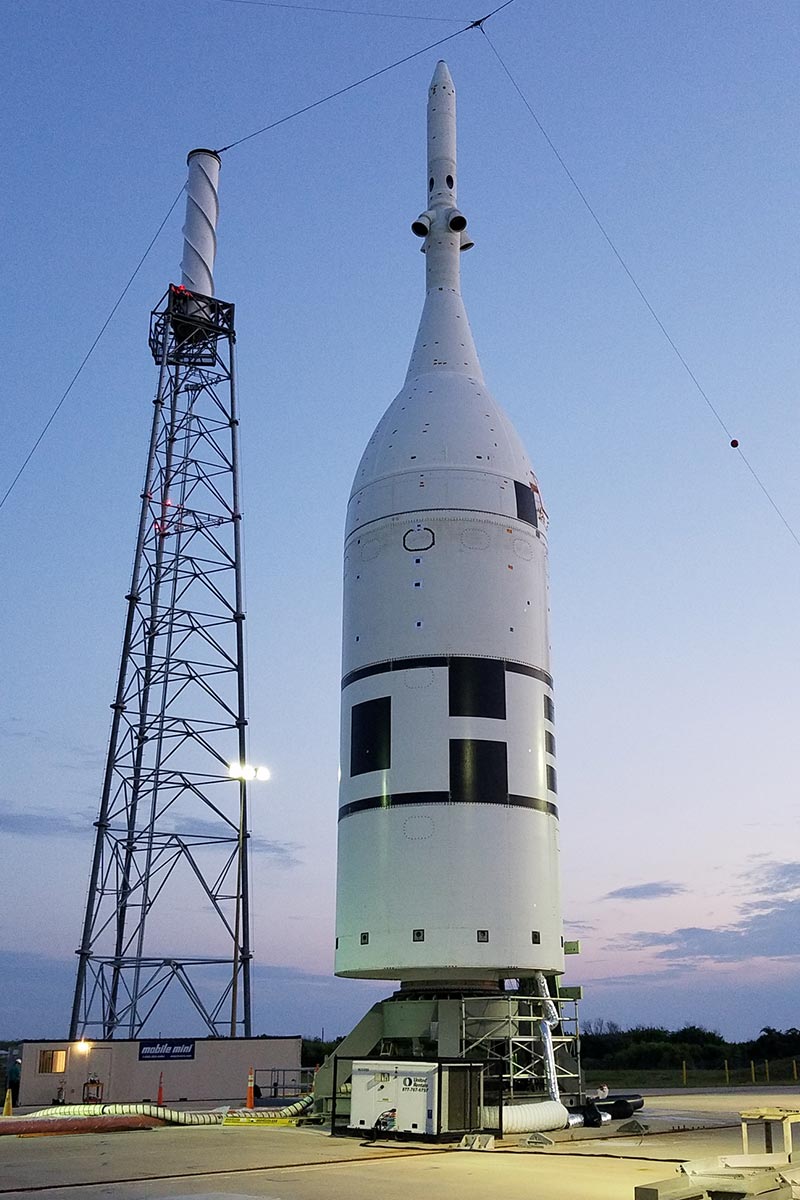
Acceleration: From Zero to 405 mph in Two Seconds
Orion will be launched atop the Space Launch System (SLS), NASA's most powerful rocket, during the Artemis I and Artemis II missions. The Orion spacecraft includes a stack of three rocket motors, the abort motor, the attitude control motor and the jettison motor, that work together to quickly lift the crew capsule away from the SLS to abort the flight in the event of an emergency.
"If something goes wrong with the rocket, milliseconds make a big difference," said Pamela Petranovich, program manager for the abort motor.
The abort motor only burns for five seconds, which provides enough thrust to pull the crew away from an emergent situation and on to safety.
"If this scenario were to happen on the pad, the abort system will go from zero to 405 miles per hour in two seconds," said Petranovich.
Control: Algorithm Ensures Thrust While Maintaining Pressure
Ignited at the same time as the abort motor, the attitude control motor (ACM) provides additional thrust to steer the capsule.
"We perform a pitch-over maneuver, which kind of looks like a cartwheel, to make sure we're facing the right way for parachute deployment," said Sutton.
Sutton and the ACM team spent thousands of hours designing the motor, which presented many engineering challenges. They used novel materials to build the rocket’s thrusters, such as carbon/carbon silicon carbide, a woven composite material that can withstand high temperatures of thousands of degrees while maintaining structural capability.
Engineers for both motors also contended with competing design requirements. While the rockets had to be able to handle high temperatures, they also needed to be protected from environmental hazards, such as lightning strikes, which are common in Florida, where the SLS will launch.
"We had to insulate the motor at the same time as having the conductive ability, in case there was a lightning strike, so that we could conduct all that energy away from the motor itself," said Petranovich.
The ACM has a unique valve control system that enables each valve to open and close, directing the flow of gas. The rocket can provide 7,000 pounds of thrust in any direction. One propellant grain burns and feeds hot gas to eight valves.
"Through our pressure control algorithm, we are able to not only meet our mission (thrust) requirements but maintain a certain pressure while doing so," Sutton explained.
The ACM is the first human-rated controllable solid propulsion system, and the active software program control technology could eventually be used for other human spaceflight missions and landers as well as rockets for defense and tactical missions.
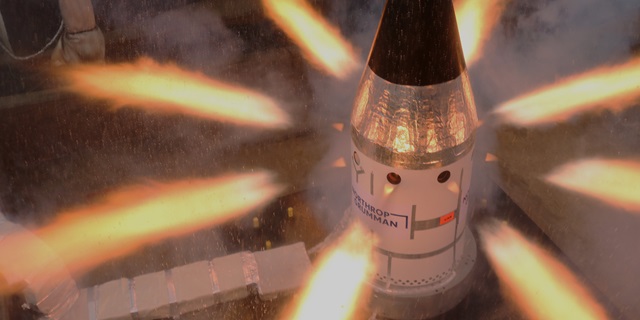

Ensuring Astronaut Safety Now for Future Space Travel
The LAS was tested extensively to be considered a fully-qualified system for crewed missions. Materials and components were tested, then each of the rockets went through qualification static testing, and then the entire LAS was flown twice, once simulating a pad abort and once an ascent abort. For the static motor firings, each motor was mounted in a test stand, which constrains the rocket from moving, and is ignited. Tests are performed to test the entire system together: to measure thrust, burning rates, temperature, strain and other performance indicators.
A pad abort test of the entire LAS was conducted in 2010 from a launch pad in White Sands Missile Range, where each of the 3 rocket motors functioned flawlessly. Then in July 2019, years of design and testing culminated with Ascent Abort-2, a three-minute flight test of the entire system at Cape Canaveral Air Force Station in Florida.
"When the abort motor was ignited, you could see this big poof of smoke come out of the end – a distinct plume and rapid movement of the capsule away from the boost rocket," said Petranovich.
It propelled the entire stack away from the launch vehicle, then the ACM spun the stack around to orient it correctly for a safe release of the Orion capsule to splash down in the Atlantic Ocean, exactly as planned.
The LAS provides astronauts safe access to space with an escape in case something unexpected happens during launch. By making launch safer for astronauts, the Orion spacecraft’s Launch Abort System will help humans safely travel to the moon, and eventually on to Mars, in our quest to explore beyond Earth's atmosphere.
More Innovation Stories
Click here to read all stories about advanced technology and innovation >>
